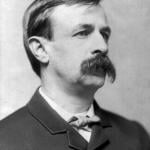One of the delights of Philip Ball’s forthcoming Invisible is to see how frequently rationalists and materialists were have been taken in by charlatans.
One might have thought that those who came-of-age and were Enlightened by reason would be immune to tricks, beliefs in ghosts, and in fairies and sprites. Ball shows that beliefs in invisible forces actually flourished during the Enlightenment. Mesmer claimed to be able to manipulate the magnetic fluid in human bodies in his medical practice. The Prussian Chemist Carl von Reichenbach claimed to see auras around human beings, plants, and crystals. Ghosts took on a new life in the 18th century, just when we would have thought they were being expelled once and for all.
Conan Doyle’s notorious defense of the Cottingley fairy photos was typical both for its display of sophisticated gullibility and for the pseudo-science that backed up the belief. Doyle argued that “we see objects within the limits which make up the colour spectrum, with infinite vibrations, unused by us, on either side of them. If we could conceive a race of beings which were constructed in material which threw out shorter or longer vibrations, they would be invisible unless we could tune ourselves up or tone them down.” In fact, the fairies had been copied from children’s books and turned into cardboard cutouts.
Ball doesn’t think that the Enlightenment obsession with invisible forces, ghosts, secrets and secret societies is an accident. For some, it was a bulwark against atheism; for others, it was compensation, however small, for the disenchantment of the world by science. Conan Doyle was quite self-conscious at this point: “The recognition of [the fairies’] existence will jolt the material twentieth-century mind out of its heavy ruts in the mud, and will make it admit that there is a glamour and a mystery to life. Having discovered this, the world will not find it so difficult to accept that spiritual message supported by physical facts which has already been so convincingly put before it.”
Inevitably, one is put in mind of Chesterton’s remark about believing anything.











